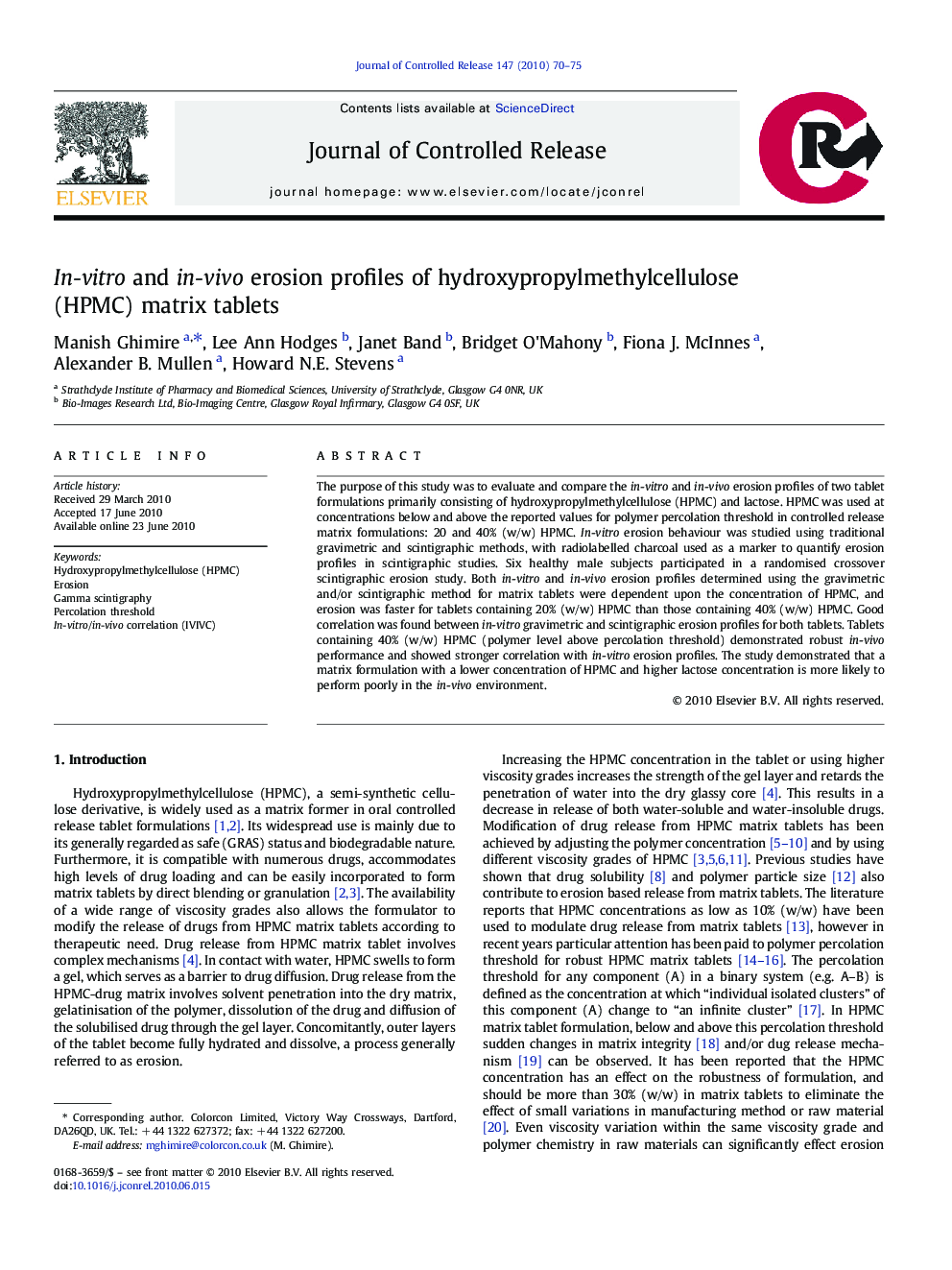| Article ID | Journal | Published Year | Pages | File Type |
|---|---|---|---|---|
| 1425472 | Journal of Controlled Release | 2010 | 6 Pages |
The purpose of this study was to evaluate and compare the in-vitro and in-vivo erosion profiles of two tablet formulations primarily consisting of hydroxypropylmethylcellulose (HPMC) and lactose. HPMC was used at concentrations below and above the reported values for polymer percolation threshold in controlled release matrix formulations: 20 and 40% (w/w) HPMC. In-vitro erosion behaviour was studied using traditional gravimetric and scintigraphic methods, with radiolabelled charcoal used as a marker to quantify erosion profiles in scintigraphic studies. Six healthy male subjects participated in a randomised crossover scintigraphic erosion study. Both in-vitro and in-vivo erosion profiles determined using the gravimetric and/or scintigraphic method for matrix tablets were dependent upon the concentration of HPMC, and erosion was faster for tablets containing 20% (w/w) HPMC than those containing 40% (w/w) HPMC. Good correlation was found between in-vitro gravimetric and scintigraphic erosion profiles for both tablets. Tablets containing 40% (w/w) HPMC (polymer level above percolation threshold) demonstrated robust in-vivo performance and showed stronger correlation with in-vitro erosion profiles. The study demonstrated that a matrix formulation with a lower concentration of HPMC and higher lactose concentration is more likely to perform poorly in the in-vivo environment.
Graphical abstractFigure optionsDownload full-size imageDownload as PowerPoint slide
